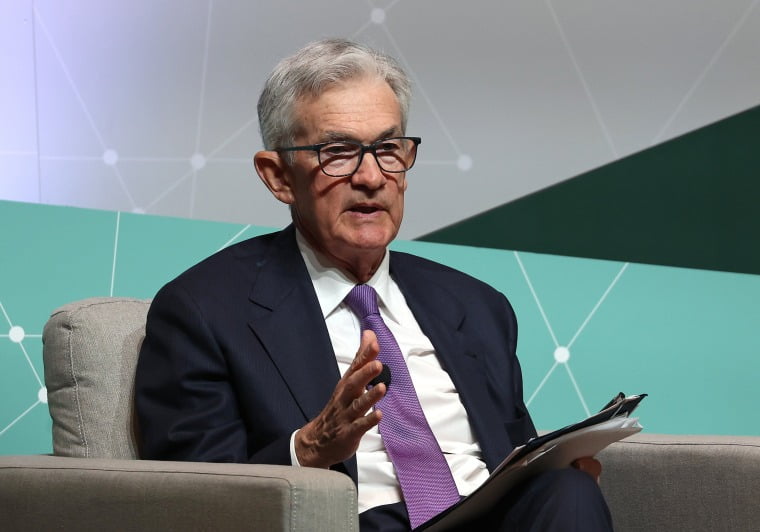Speculation that there could be no interest rate reductions this year has been growing, although economists remain divided.
In Short
- Speculation is growing among economists regarding potential interest rate reductions this year.
- Factors such as strong jobs data and inflation rates are influencing these speculations.
- Market pricing reflects uncertainty, with chances of rate cuts dropping below 50% for june and july.
- Despite divided opinions, some analysts still anticipate rate cuts based on growth and inflation expectations.
- The timing of rate reductions will depend on recent data and the fed’s reaction, with ongoing discussions shaping market dynamics and investor sentiments.
TFD – Dive into the ongoing speculation surrounding interest rate reductions and the insights provided by economists. Discover how market dynamics and the Fed’s reaction are influencing these discussions, shaping the financial landscape for the foreseeable future.

Though opinions among economists are still mixed, there has been growing speculation that interest rate decreases may not occur this year.
The jobs data released on Friday indicated that the U.S. labor market is still strong and that the Fed should exercise more prudence going forward. The consumer price index on Wednesday will be the focus of attention following February’s 3.2% annual inflation rate, which was little higher than anticipated.
It comes as a growing number of market participants have raised the possibility of no rate cuts at all this year, including Minneapolis Fed President Neel Kashkari who said last week that no reductions were a possible scenario if inflation continued to move sideways.
Mazars Chief Economist George Lagarias said on Monday on CNBC that rate cuts in the summer were now far less likely.
He stated on Monday on “Squawk Box Europe” that “personally, I wouldn’t be surprised if we saw less rate cuts and pushed more towards the end of the year.”
The economy is robust right now. Make no mistake, it is backed by debt and somewhat by overburdened credit cards, but it is a strong economy. So the Fed will struggle to find the case to cut rates soon.”
According to the CME’s FedWatch tool, market pricing reflects the persistent uncertainty, with the chance of a rate cut currently under 50% for both June and July – much lower than at the beginning of the month.
The Federal Reserve has been penalizing itself since 2021, when ‘team transitory’ purportedly made a mistake. What they feel is that they can’t get it wrong again, which means that they’re more likely to err on the side of caution,” Lagarias added.
He noted that despite this, rate cuts this year are still “very likely.”
They don’t want to make a mistake, but they do have some leeway to trim. They don’t want to be the Fed that lowered interest rates as inflation continued to exceed forecasts. Thus, they are prepared to wait and would want to see additional information that points in the correct direction, Lagarias continued.
Not a single rate reduction?
Though opinions among economists are still mixed, there has been growing speculation that interest rate decreases may not occur this year.
Torsten Slok, chief economist at Apollo Global Management, said last month that he doesn’t expect any cuts as the U.S. economy is “simply not slowing down,” and top U.S. asset manager Vanguard has no rate reductions as its base case for the year.
In contrast, former Vice Chairman of the Federal Reserve Roger Ferguson told CNBC last week that there is a 10%–15% probability that there won’t be any cuts this year.
The Federal Reserve’s own indication from March that it anticipates three quarter-percentage point reductions this year is still supported by other analysts and economists.
Goldman Sachs Chief Economist Jan Hatzius told CNBC on Friday that he would “expect some rate cuts based on what Chair Powell and other Fed officials have said,” citing current growth and inflation expectations.
Naturally, the timing of that will rely on recent data and the Fed’s reaction function, but given our projection, I would be shocked if rate reduction weren’t announced this year. Really taken aback.
Conclusion
The ongoing speculation and discussions among economists and market participants regarding interest rate reductions highlight the complexities and uncertainties in financial forecasting. While opinions are divided, factors such as jobs data, inflation rates, and market dynamics continue to influence these discussions. The timing of potential rate reductions remains a key point of interest, with ongoing data and the Fed’s reaction playing crucial roles. As the financial landscape evolves, staying informed and adaptable is essential for investors and businesses alike.
Connect with us for the Latest, Current, and Breaking News news updates and videos from thefoxdaily.com. The most recent news in the United States, around the world , in business, opinion, technology, politics, and sports, follow Thefoxdaily on X, Facebook, and Instagram .
